Paul Owen takes a look at the Karikari from InsideOut RV.
When Jared Chisnall founded InsideOUT RV it was mainly so he could import his own Aussie-made caravan and pay a wholesale price. However, the incoming caravans from the Melbourne-based NextGen factory proved so popular that they didn’t stick around long enough for Jared to stake his claim on one. What made them so popular was that Jared designed the caravans to be more suited to Kiwi tastes and conditions, and persuaded NextGen to tailor their builds to his specifications.
“We don’t just bring an Aussie van over, we get a Kiwi van made in an Aussie factory.” What’s the difference? Seems it’s all about where we sit.
“Aussies either sit in their vans out of the sun, or in the sun out of their vans, whereas Kiwis tend to sit in their vans more and enjoy the sun streaming through the windows. Quite a few of our vans therefore have front windows where NextGen models for Australia have none, and the side windows are generally larger.”
Another key difference is that the New Zealand models allow you to stay for longer in freedom campsites.
“We get extra tanks fitted along with extra batteries, and the ability to carry two 9kg gas bottles. Australian caravanners tend to stay in motor camps, so that they can run their air-conditioning.”
The chassis of the New Zealand models is also hot-dip galvanised, whereas this corrosion protection is an optional extra in the Australian models. A nice finishing touch is naming the New Zealand caravans after some of the most scenic destinations in the country – Piha, Motueka, Tekapo – but the tailoring doesn’t end there.
Bespoke details
Every InsideOUT RV customer has the opportunity to personalise their van. Choosing different colours, interior trim, and flooring is built into the base price of all the models, but you can take things further with a custom layout, although at extra cost.
The Karikari model shown here is an example of a custom caravan that the buyer has tailored for their needs. Jared might never sell two caravans that are the same, but this one differs in more ways than usual. A major shift was to site the three bunk beds across the rear of the van, each with its own bedside window and curtains. The internal height of the cabin was also raised by 50mm, for extra head room.
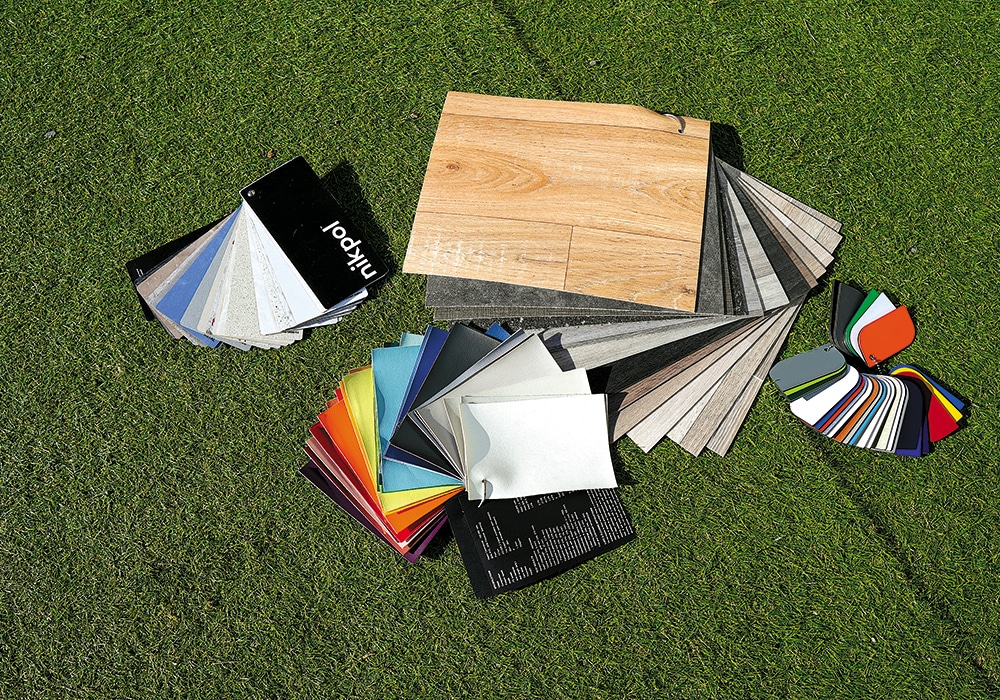
Exterior
Sitting relatively high on its beefy chassis, the Karikari looks ready to tackle anything. The galvanised chassis is mounted on dual axles fitted with all-terrain tyres and sporty alloy wheels. There’s a generous skirt of black checker-plate aluminum armour guarding the caravan body from damage. A front box, built from the same material, protects the gas bottles and slide-out Weber barbecue. Even the three 100Ah house batteries under the rear overhang have individual checker-plate box protection.
The body is 6.7 metres long, and the off-road-ready drawbar takes the length of the 2500kg caravan to 8.2 metres. It’s a big spacious rig that’s 2.95 metres high and right on the legal width limit at 2.45 metres. So much so that a flush three-pin plug is fitted for mains power hookup, as the usual elbowed plug fitted to caravans would breach that width limit.
The exterior detailing of the Karikari focuses on outdoor recreation. There’s a fold-down picnic table, a panel that opens to reveal an outdoor TV mount with plugs and aerial, and a long front stowage area, which you can access from either side to stow/retrieve the outdoor furniture. A neatly plumbed outdoor shower is curled up behind an exterior panel below the right-rear window, and two external speakers have been added to the Furrion internal entertainment system.
The left side of the Karikari can be shaded by a huge pull-out Dometic 8300 awning that covers every window, and quite a bit more, on that side.

Lounge
The checker-plate theme continues as you enter through the left-side door – the stepwell is fashioned in silver checker-plate, an easy-clean material that will come in handy for scraping any mud off footwear. You step up via the fold-out manual step, then the well, into a spacious lounge, passing a cupboard that houses a washing machine on your right. The customer chose an elongated bench and table for his lounge, but there’s a U-shaped seating option for those who want to seat more people.
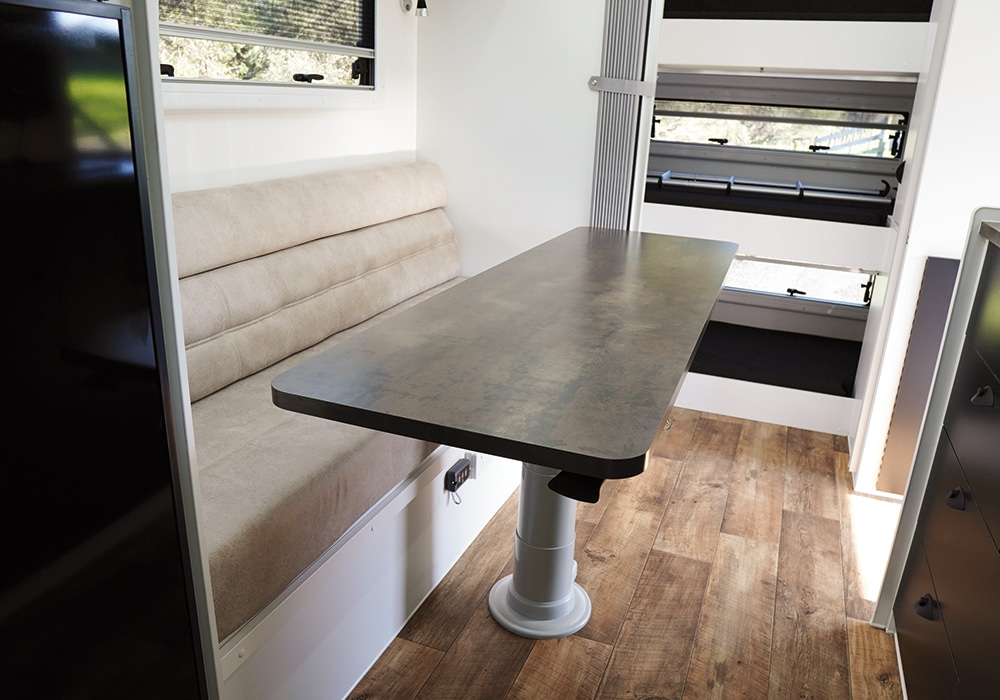
Kitchen
A bright yellow splashboard is a nice touch in the kitchen, a brilliant counterpoint to the darker hues of the tap, sink and benchtop. As with all the trim, there are a lot of splashboard colours to choose from. In this van, the board also has a mounting point for a portable TV, which can be quickly transferred outside when required.
A Swift gas stove with four hobs and an oven resides next to house-sized cupboards and drawers in the Karikari, facing a premium 188L Dometic RUA 6408X 3-way fridge. A 12V Ranger hood fan is mounted above the stove. It all adds up to a roomy, attractive and purposeful area that takes advantage of the usual extra space in caravan kitchens.
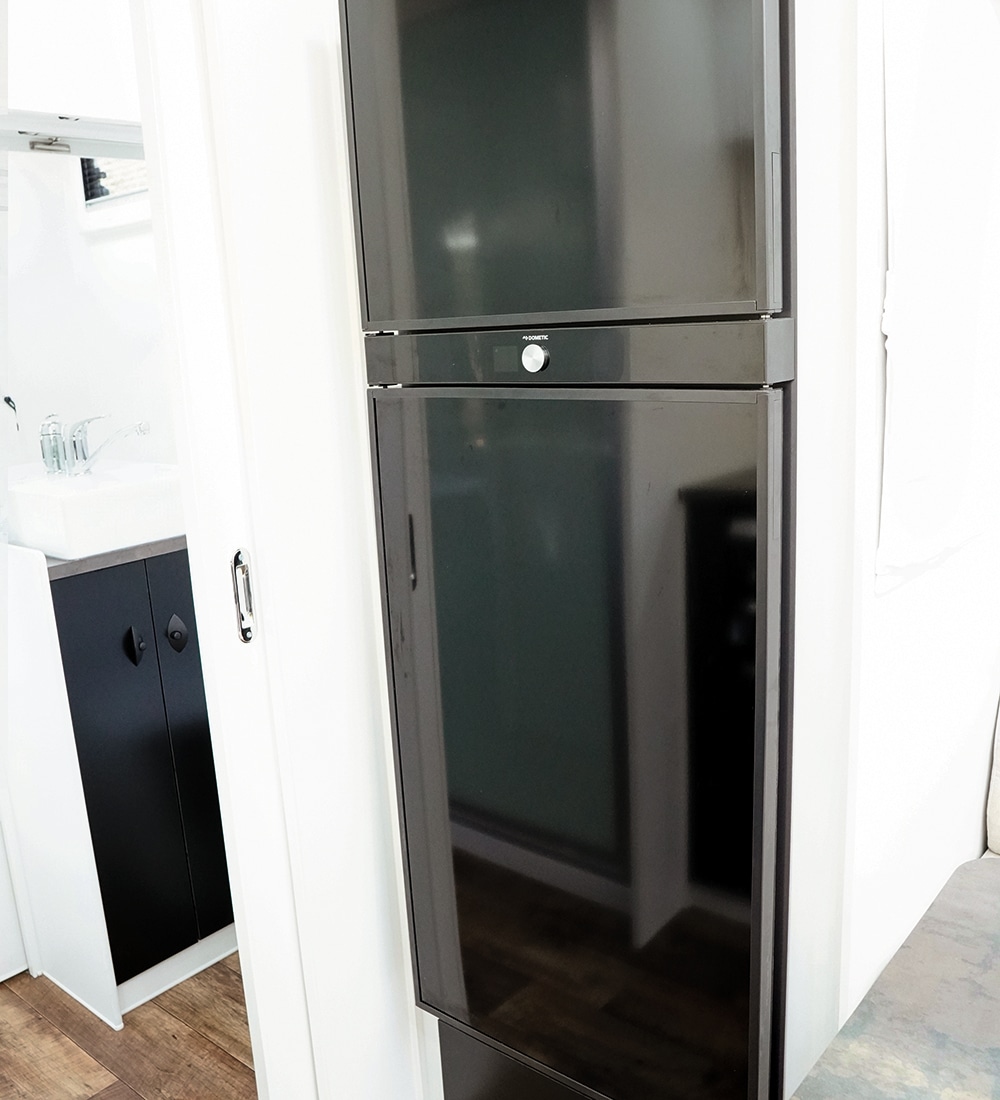
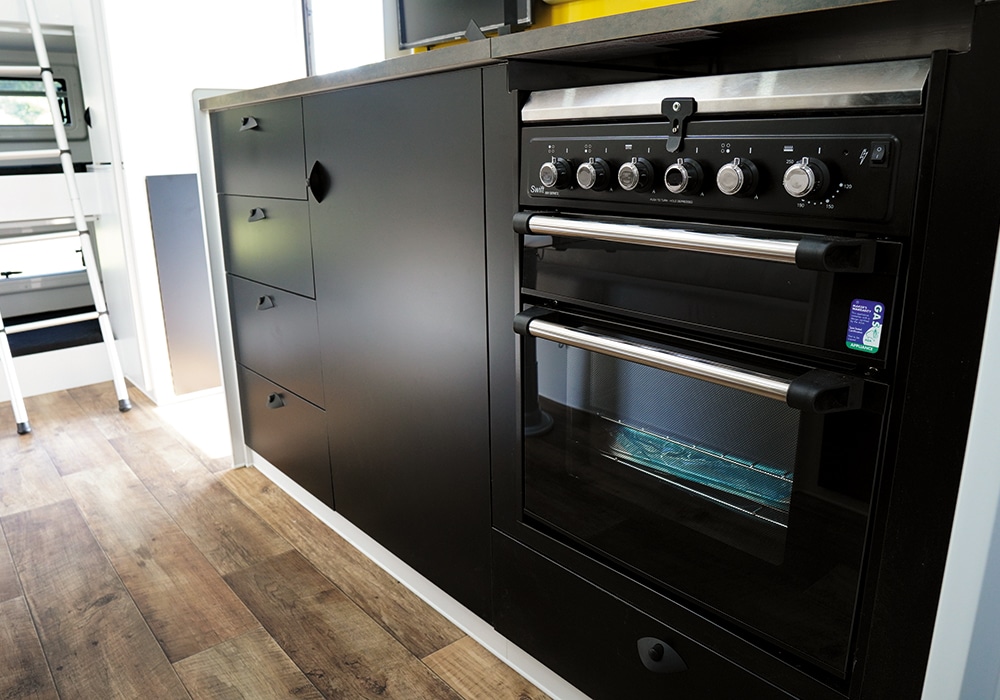
Washroom
Ditto, the personal hygiene/grooming spaces appear larger than the motorhome norm. There’s a wetroom/shower on one side of the walkway between the main bedroom and kitchen, and on the other side a room with a swivelling Dometic toilet, a washbasin and cabinet – its ebony finish stands out in a decor full of contrast.
The Karikari has two 95L freshwater tanks and a 95L tank for greywater, all three able to be monitored electronically. Water heating is supplied by a two-way Swift system that can run on either gas or electricity, while cabin heating is via a diesel system.
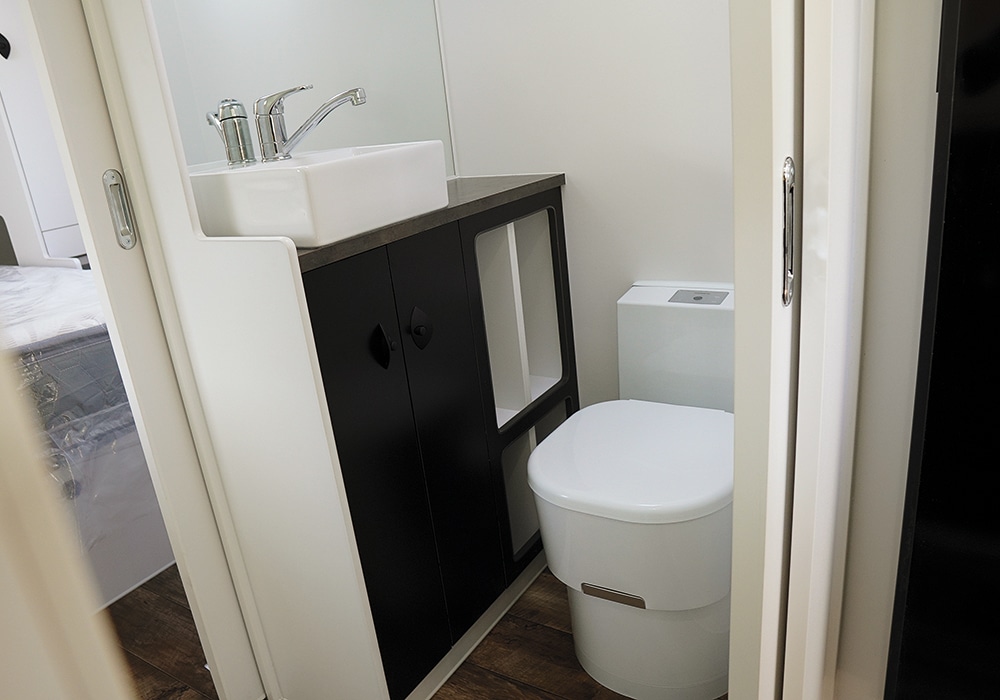
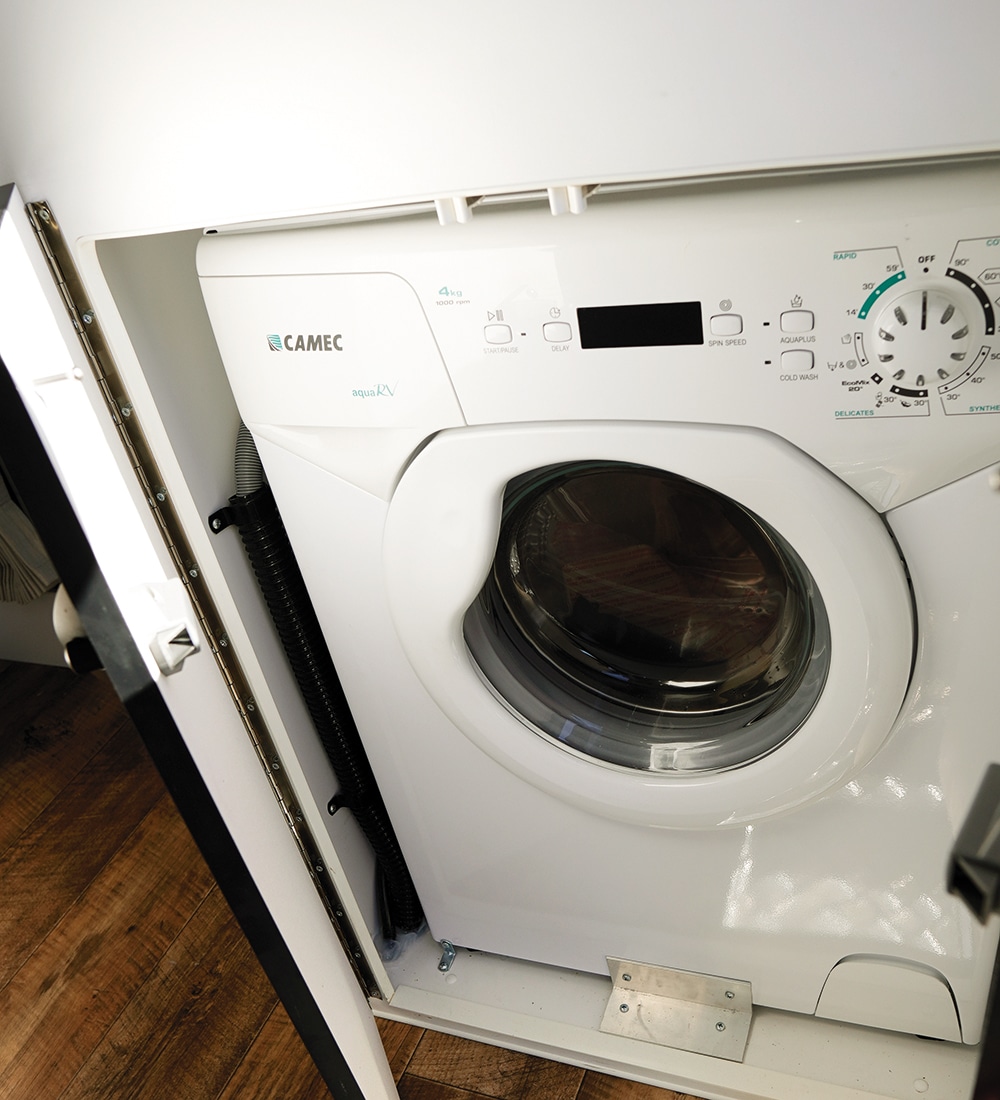
Bedrooms
The three stacked bunk beds at the rear can be curtained off for privacy, providing second-class accommodation compared to the impressive master bedroom at the other end of the caravan.
Here you’ll find a roomy double bed, flanked by wardrobes, overhead compartments, and two large windows on either side. Unlike many motorhome windows, these open to a full 45-degree angle, allowing plenty of air to flow through. If that’s not enough, there’s a fan mounted near the ceiling in one corner, taking the fan count to three: one for the kitchen, one ventilating the wetroom, and this one to keep things cool at night for the primary residents.
The main bed tucks the pillows into the bulge at the front of the van, reducing aerodynamic drag when on the move. This might limit your ability to sit up in bed, but this Karikari’s eventual owner obviously aims to do a lot of tablet-viewing while lying flat in bed, judging by the special mount for such a device angled towards the pillows.
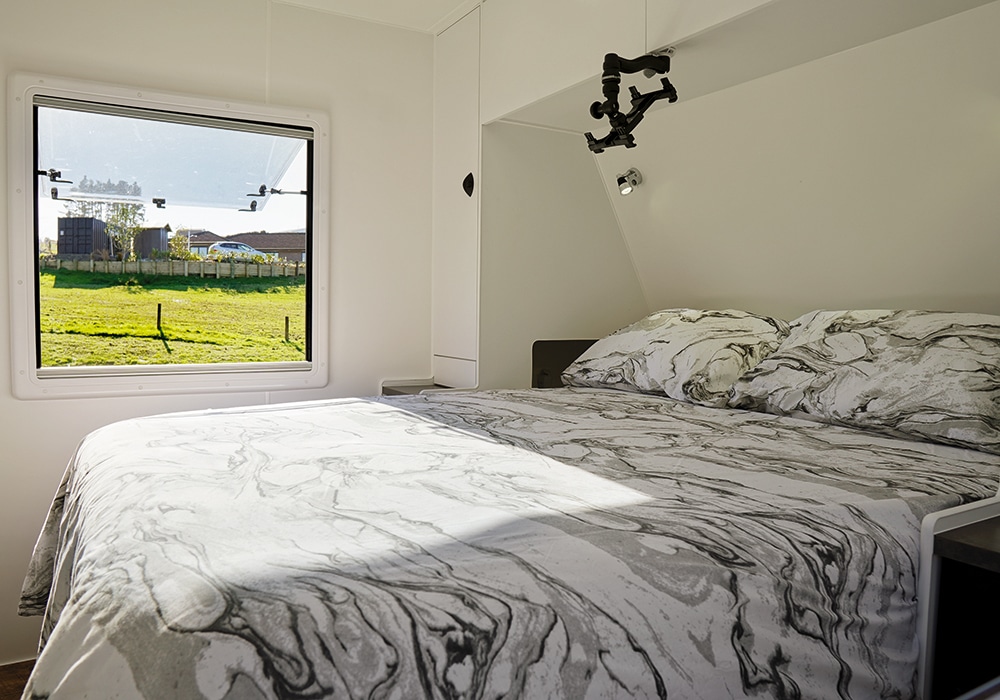
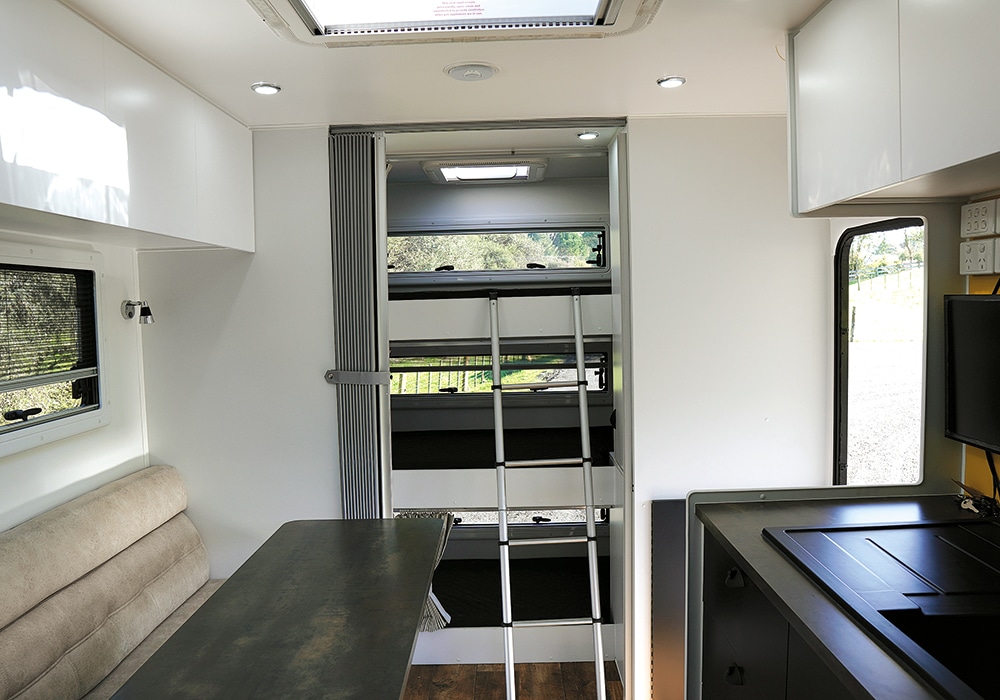
Rear
The chassis protrudes past the rear of the body, forming a platform for a spare wheel, bike racks or whatever takes the owner’s fancy. There’s a reversing camera at the top of the rear wall, and an outside light, just above head height.
Freedom camping
With two 170W solar panels on the roof to keep the three house batteries topped up via a Redarc Redvision system, 190L of fresh water (or more by adding up to two more tanks), and a 2500W inverter to provide 240V power, the Karikari is made to camp anywhere. The outside 240V plug will definitely come in handy any time an e-bike needs recharging. And the outside tap, threaded for a hose attachment and located on the drawbar, will also be appreciated when this caravan is parked up somewhere remote and the fishing is successful.
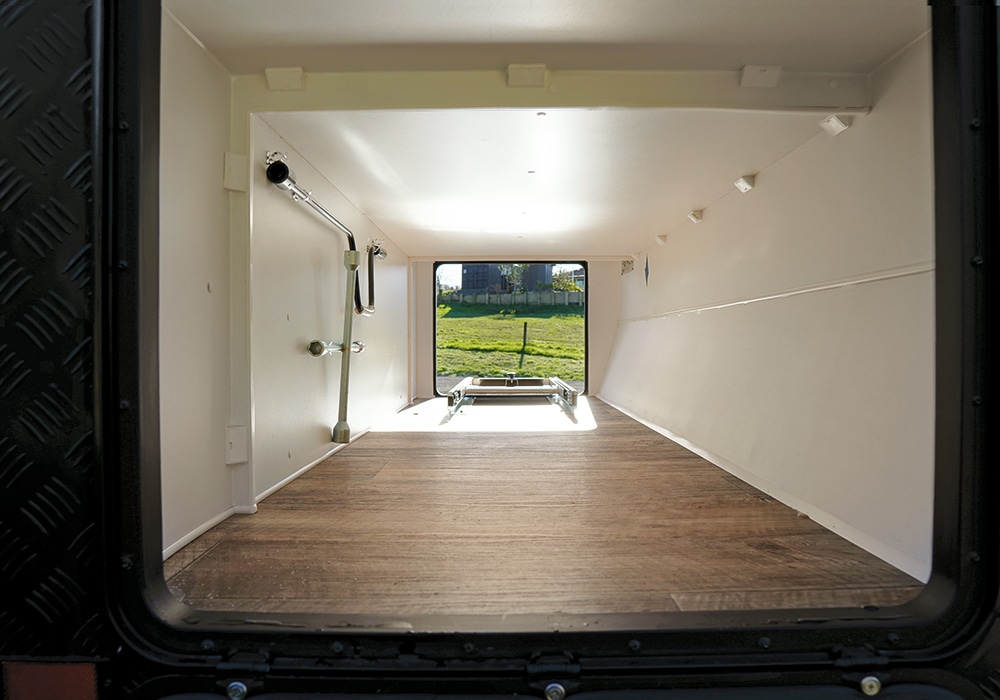
Summary
It might be made in Australia, but it’s all the adaptations to enhance New Zealand caravan life that make the Karikari so special. The layout changes made by this InsideOUT RV customer have also enhanced the family appeal of this roomy and capable caravan, increasing interior space while still retaining usability.
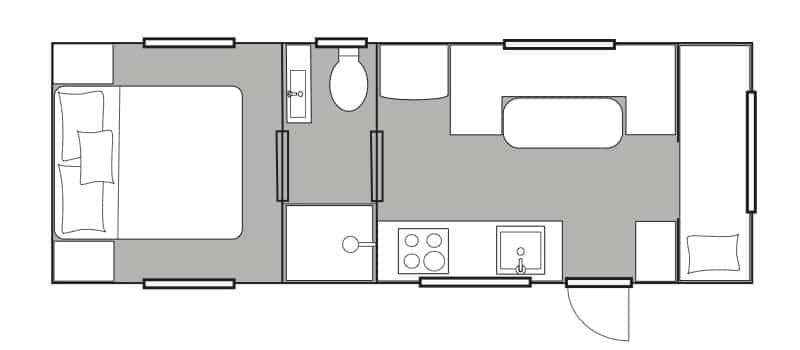
Pros
- Huge personalisation potential
- Roomy lounge and main bedroom
- Built tough for family fun
Cons
- 6-month lead time on build
- Greywater capacity could be greater
- Maybe you want a van like others
NextGen Karikari Caravan Specifications
| Make & Model |
NextGen Karikari Caravan |
| Chassis |
Hot-dipped, galvanised aluminium beam, tandem-axle with Roller Rocker suspension |
|
Berths |
5 |
|
Length/Width/Height |
8200mm/2450mm/2950mm |
|
Water: Fresh/Hot/Grey |
190L/10L/95L |
|
GVW |
3500kg |
Price for 2022 model: $132,000
Visit insideoutrv.co.nz to find out more.






